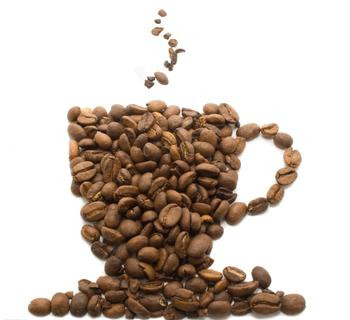High-quality coffee beans common sense and practical knowledge of raw beans
The original species of Arabica can be divided into washing type (washed) and non-washing type (Unwashed) (it is correct to say that the original Robusta species can also be distinguished in this way, except that the original robusta species are rarely washed). In the raw capital state, the endocarp part of the central fissure (center cut) is brown yellow, which is treated by non-washing refining method, while the grayish green ones are treated by washing refining method. After baking, if the central line (center line) of the central crack (center cut) of the tea-brown coffee bean is white, and the white Silver Skin (silver seed coat) still remains, it means that the refining method is washed with water, while if the central line and other parts are brown with tea, and then almost no white Silver Skin remains, the refined hair is non-washed (natural drying).
If new crop (beans produced in that year), the average moisture content of raw beans with water washing is less than 12%, while that of non-washing beans is about 11%. If the raw beans contain more than 14% moisture, because the green beans look black, they will often turn white in a very short period of time and lose the original flavor of the coffee, so pay special attention to it.
Excerpt from "Coffee Road"

Important Notice :
前街咖啡 FrontStreet Coffee has moved to new addredd:
FrontStreet Coffee Address: 315,Donghua East Road,GuangZhou
Tel:020 38364473
- Prev

Roasting knowledge of coffee beans characteristics of coffee beans at different roasting stages
Light the most mild baking, no fragrance and concentration can be said to test light for the general popular baking degree, leaving a strong sour taste. The cinnamon color of beans is favored by people in the western United States. Medial is moderately baked. Mellow, sour and delicious are mainly used in blended coffee with moderate High acidity and bitterness. It is suitable for coffee such as Blue Mountain and moving Mazaro for Japanese and Nordic people.
- Next

The basics of coffee tasting: ten steps to improve your sense of smell
There may be many reasons why you want to improve your sense of smell. First of all, the sense of smell is closely related to your sense of taste. Try to hold your nose and taste the food! Smell is also a necessary skill to describe the aroma of wine, coffee, beer, or even tea. Generally speaking, you can smell the scent of flowers, or the scent of someone, or the subtle difference in the fallen leaves in autumn.
Related
- Beginners will see the "Coffee pull flower" guide!
- What is the difference between ice blog purified milk and ordinary milk coffee?
- Why is the Philippines the largest producer of crops in Liberia?
- For coffee extraction, should the fine powder be retained?
- How does extracted espresso fill pressed powder? How much strength does it take to press the powder?
- How to make jasmine cold extract coffee? Is the jasmine + latte good?
- Will this little toy really make the coffee taste better? How does Lily Drip affect coffee extraction?
- Will the action of slapping the filter cup also affect coffee extraction?
- What's the difference between powder-to-water ratio and powder-to-liquid ratio?
- What is the Ethiopian local species? What does it have to do with Heirloom native species?

